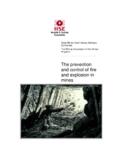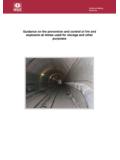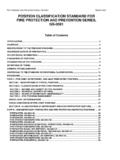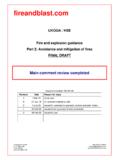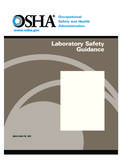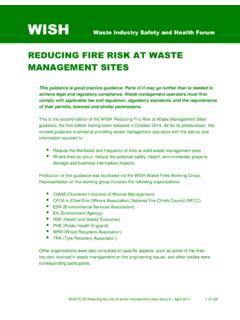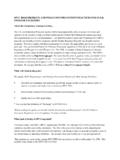Transcription of DEPARTMENT OF THE NAVY HEADQUARTERS …
1 DEPARTMENT OF THE NAVY. HEADQUARTERS UNITED STATES MARINE CORPS. WASHINGTON, DC 20380-0001. MCO MHH. 24 Nov 92. MARINE CORPS ORDER From: Commandant of the Marine Corps To: Distribution List Subj: MARINE CORPS TOBACCO prevention AND control PROGRAM. Ref: (a) SECNAVINST 1. Purpose. To provide a smoking policy in Marine Corps occupied buildings and facilities, and guidance per the reference, for the establishment and implementation of smoking prevention and cessation programs. This Order does not cancel or supersede any other instructions where smoking is controlled due to fire, explosives, or other safety considerations. 2. Cancellation. MCO 3. Definitions a. Smoking. Behaviors related to the act of drawing the smoke from cigarettes, cigars, and pipes, into the mouth and often lungs, and blowing it out again, or having a lit cigarette, cigar, or pipe in one's possession or in an ashtray. b. Environmental Tobacco Smoke (ETS). The combination of side-stream smoke emitted by burning cigarettes, cigars, and pipes, and exhaled (main-stream) smoke from the smoker.
2 C. USMC Controlled Space. Any building, aircraft, or vehicle under Marine Corps control . Exclusive use leased facilities or spaces are included unless lease provisions or other compelling reasons preclude implementation of the smoking policy. d. Smoke Free. A condition by which smoking is prohibited in a particular area. e. Common Areas. Space within a building common to all occupants and visitors, such as corridors, elevators, lobbies, lounges, stairways, restrooms, cafeterias, laundry rooms, work areas, etc. f. Designated Smoking Area. An outdoor or enclosed area, designated by the commanding officer, where smoking is allowed. Enclosed areas used for smoking must have a separate exhaust ventilation system and be maintained under negative pressure. The air from this area is either exhausted directly outside and not recirculated within the building or, less favorably, filtered by a system that meets the American Society of Heating, MCO 24 Nov 92. Refrigerating, and Air-Conditioning Engineers (ASHRAE) standards.
3 The area should be provided fresh air at the ASHRAE. recommended level for smoking lounges. Assistance for industrial ventilation requirements, design, and measurements is available from the cognizant (Navy medical) industrial hygienist. 4. Applicability a. Applies to all DoD military and civilian personnel including nonappropriated fund employees, and to all dependents and visitors while in USMC controlled spaces. b. This Order does not override the provisions of existing civilian collective bargaining agreements. Prior to implementing this policy for civilian employees, activities must, where applicable, discharge their labor relations obligations. 5. Background. The health consequences of smoking, use of tobacco products, and exposure to ETS have been well documented by the Surgeon General of the United States. Smoking is a leading cause of diseases associated with premature death in the United States. The Surgeon General's report on involuntary smoking, passive inhalation, determined that ETS is a cause of these same illnesses in nonsmokers.
4 The report calls tobacco one of the most addictive drugs available on the market today. In addition, the Environmental Protection Agency has concluded that involuntary exposure to ETS causes cancer in nonsmokers. The simple separation of smokers and nonsmokers within the same common space may reduce, but not eliminate ETS exposure. It is not entirely feasible to engineer out or provide protective equipment to control the exposure to ETS. This exposure adversely impacts on the health and readiness of our Corps. In combat trauma, it lessens our Marines' ability to survive, and is a major cause of increased cost of medical care in both the military and civilian populations. Protection of the health of our personnel, and compliance with regulatory requirements to provide a safe and healthy workplace for all personnel, are the primary reasons for establishing this policy. 6. Policy. It is Marine Corps policy to discourage the use of tobacco products, to protect all personnel from exposure to ETS.
5 To the greatest extent possible, and to provide users of tobacco products with encouragement and professional assistance in stopping their dependency on tobacco products. The objective is to establish a safe, healthy, and "tobacco/smoke free" environment for all personnel. a. Smoking is prohibited in Marine Corps occupied buildings and facilities as noted below: 2. MCO 24 Nov 92. (1) Base Family Housing. In the common areas of multiple family units. (2) Auditoriums and Theaters. (3) Conference Rooms, Classrooms, and Libraries. (4) Elevators. (5) Official Buses, Vans, and Shuttle Vehicles. (6) Gymnasiums and Youth Activity Centers. (7) Child Care Centers. (8) Family Day Care Homes. Smoking in Family Day Care Homes shall not be permitted when children, other than the provider's own, are present unless the parents of those children voluntarily consent thereto in writing. (9) Work Areas. Indoor work areas where a central air system is in use. Commanding officers may allow smoking in private offices only if that office meets the ventilation criteria described under paragraph 3f of this Order.
6 In common work areas, without a central air system, space may be planned to accommodate the preferences of smokers and nonsmokers provided that: (a) Efficiency of work units will not be impaired. (b) Additional space or costly alterations will not be required. (10) Barracks. Smoking and nonsmoking preference shall be considered in the assignment of barracks berthing space. There shall be no smoking in BOQ/BEQ rooms or squadbays shared by smokers and nonsmokers. When it is impractical to segregate smokers and nonsmokers, smoking is prohibited. In barracks which have a central ventilation system smoking is prohibited. (11) Corridors, Lobbies, and Restrooms. Corridors, lobbies, and restrooms shall be designated as no-smoking areas unless they are well ventilated, are not supplied by central air, and are designated as a smoking area by the commanding officer. b. Commanding officers may designate and post smoking areas, as necessary, in all eating facilities under Marine Corps control . Smoking areas shall be permitted only if adequate space is available for nonsmokers and ventilation is 3.
7 MCO 24 Nov 92. adequate to provide them a healthy environment. These areas must be clearly marked as a "SMOKING DESIGNATED AREA.". c. Smoking on aircraft shall be regulated by the operational directive for each aircraft type and as required by Federal law. d. Within medical treatment facilities, smoking is prohibited. All medical treatment facilities will be designated as "smoke free" facilities. 7. Action. To create a social environment that supports a abstinence and discourages use of tobacco products, and to enforce the restrictions on smoking in Marine Corps occupied buildings and facilities the following actions are directed: a. The CMC (MH) will: (1) Serve as cognizant staff section regarding Marine Corps policy on tobacco use issues. (2) Provide guidance to all activities regarding implementation of this Order. b. The CMC (MP) will: (1) Respond to civilian employee inquiries and provide advice and guidance via the normal chain of command with respect to civilian personnel policy and issues related to this Order.
8 (2) Encourage civilian employees who are tobacco users to stop, and non-tobacco users to refrain from starting. c. The CG MCCDC will: (1) Provide instruction to educate all students and officer candidates on the dangers of using tobacco products. (2) Ensure elements from this Order are included in the Troop Information Program. (3) Prohibit the use of tobacco products by staff and instructors while in the presence of students and officer candidates. d. The CG's MCRD's will: (1) Provide instruction to educate all recruits on the dangers of using tobacco products. 4. MCO 24 Nov 92. (2) Prohibit the use of tobacco products by staff and instructors while in the presence of recruits at all initial entry and training points. e. CG's, CO's, and OIC's will: (1) Promote a smoke-free working environment by taking the necessary actions to place the provisions of this Order in effect without delay. (2) Ensure exemplary behavior from top leadership in the implementation and adherence to this instruction.
9 (3) Issue a written tobacco use policy which includes a list of designated smoking areas. (4) Discourage tobacco product use at MWR facilities. (5) Encourage tobacco users to stop, and non-tobacco users to refrain from starting. (6) Provide Marines with general military training regarding: (a) Nicotine addiction and the negative impact on readiness. (b) Health risks of tobacco products to users and non-users alike. (c) Availability of smoking cessation assistance. (d) Incorporating consequences of tobacco use with current alcohol and drug abuse education. f. Medical treatment facilities, Substance Abuse Counseling Centers, and Family Service Centers will: (1) Provide tobacco users encouragement and professional assistance to stop using tobacco products. (2) Encourage tobacco use cessation programs, but personnel should not be coerced or pressured to enter these programs against their will. (3) Advise tobacco users of the risks associated with tobacco use and the dangers of second-hand and side-stream smoke to nonsmokers, the benefits of stopping, and where to obtain assistance.
10 5. MCO 24 Nov 92. (4) Advise all pregnant tobacco users of the health risks to the fetus and where to obtain assistance to stop smoking. 8. Reserve Applicability. This Order is applicable to the Marine Corps Reserve. M. T. COOPER. Deputy Chief of Staff for Manpower and Reserve Affairs DISTRIBUTION: PCN 10207241100. Copy to: 7000110 (55). 7000044 (11). 8145005. 7000099, 144/8145001 (1). 6.
